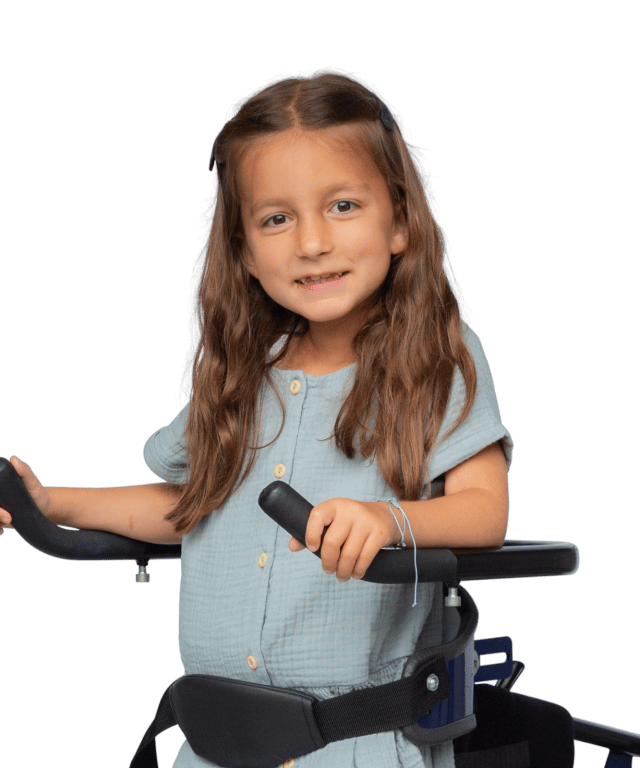The aim of the foundation is to have more research done into this disease.But also to inform patients about research and treatments. We also want to inform the general public about the many unknown and rarely occurring muscle diseases and the impact these have on sufferers and their families.
Muscle weakness
MDC1A is a congenital muscle dystrophy which manifests itself as muscular weakness . Babies often appear floppy and may not move as much as other babies. Children with Lama2-MD reach motor milestones later than other children and only a very small proportion of children are able to walk independently. Muscle weakness does not tend to rapidly progress and motor function remains relatively stable throughout childhood. When children reach puberty however, and grow taller and heavier, children might experience additional difficulties. Children may develop, or be born with, ‘contractures’. A very common problem in children with Lama2-MD is weakness of the respiratory muscles, which results in frequent chest infections and poor breathing at night. Respiratory issues usually stabilize or improve in the first few years. In adolescence however, respiratory function may begin to decline. Most children with Lama2-MD also develop a curvature of the spine (scoliosis). Another frequent problem is feeding difficulties and the accompanied weight loss. In the worst cases patients die in childhood.
There is no cure for Lama2-MD and no therapy that combats the underlying cause. Physiotherapy can help prevent the ‘contractures’, children may develop or are borne with, and a program of exercises should be worked out with a physiotherapist very soon after diagnosis, but surgery is often eventually required to release contractures. It is important to monitor respiratory function during the night and children may need to use a ventilator at night with a special facial or nasal mask. For some patients this is insufficient and a tracheostomy is needed. Respiratory issues usually stabilise or improve in the first few years, but, in adolescence however, respiratory function may begin to decline requiring more ventilator support. It is important to make sure that children with Lama2-MD are well nourished. Often the swallowing muscles are weak and feeding supplements are needed.
Research
Stichting Voor Sara believes that by investing in research it must be possible to halt these rare muscle diseases. Because Sara is not alone. There are thousands of children with some form of rare muscle disease. Because this muscular dystrophy is so rare we believe that international coöperation is key. We work together with international patientorganisations such as CureCMD and founded Lama2 Europe in coöperation with the Spanish ImpulsaT and French Lama2 France foundations. We organise conferences and family days for patients.
Voor Sara initiated a natural history study at the Radboud Nijmegen in the Netherlands, where 26 patients are enrolled. We also try to help other patientsorganisations to start their natural history study.
A scientific research team of several international universities under de lead of the university of Maastricht have started with a research plan that could help countless children. For this research, however, a lot of money is needed. With your support we can raise enough funds to help all the patients. A breakthrough would not only help Sara but many more children.
Give them all a chance for a healthier future, visit our website and make a donation.
Follow us on Facebook
Follow us on Instagram
